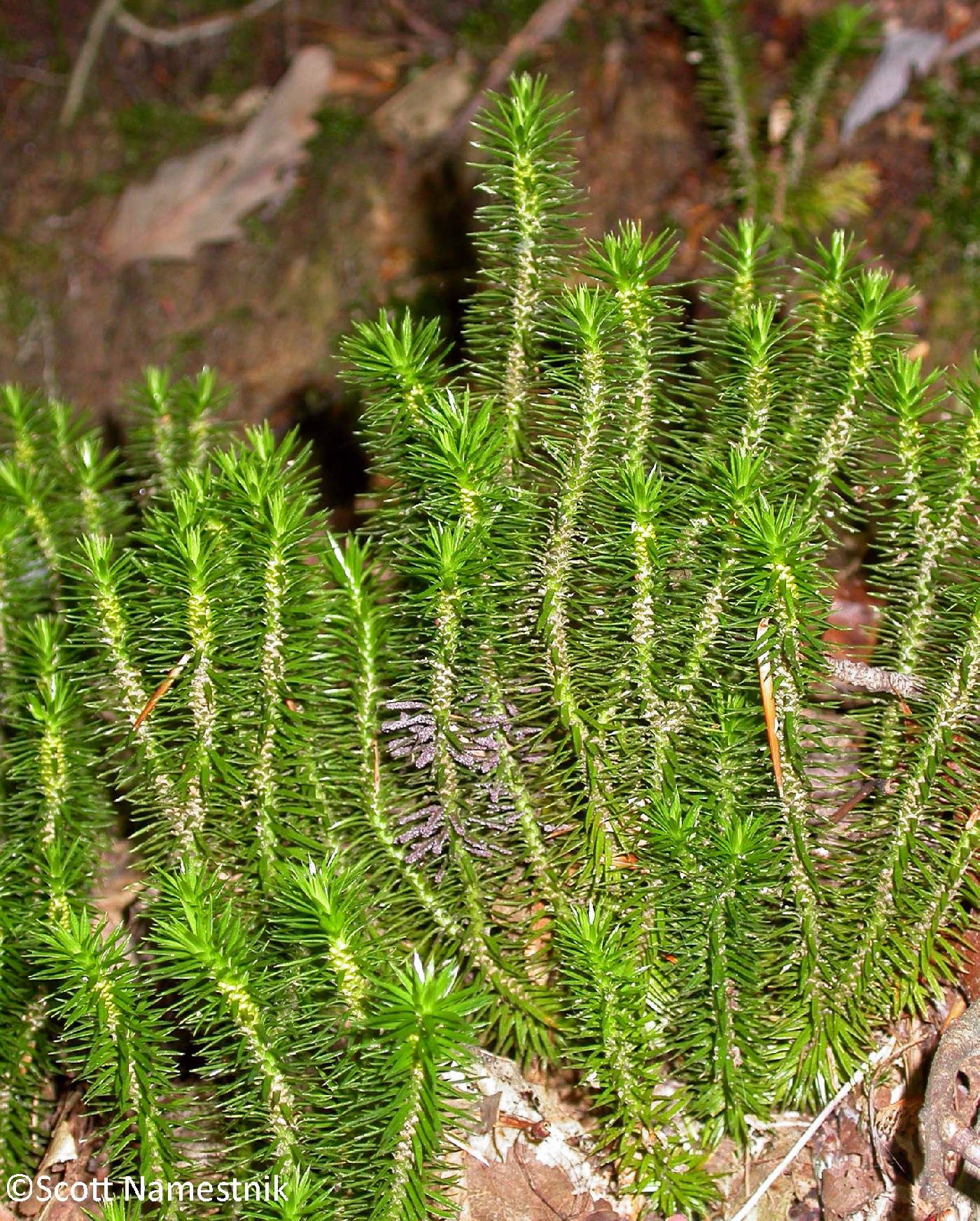Huperzia
|
Family: Lycopodiaceae |
Plants terrestrial or on rock, erect to decumbent. Roots produced in apical portions of shoot, migrating downward in cortex to emerge at soil level. Horizontal stems absent. Shoots determinate (entire plant dying after several years of spore production) or indeterminate (entire plant not dying after several years), clustered to decumbent, round in cross section, equally dichotomously branched, 2--16 mm diam. including leaves. Leaves not in distinct ranks [ranked], not imbricate [imbricate], appressed, ascending to spreading, triangular, lanceolate to oblanceolate, monomorphic or varying in size according to seasonal growth patterns; juvenile (basal or proximal) leaves mostly larger than mature (terminal or distal) leaves, margins irregularly dentate to entire, ± irregularly roughened by papillae formed by marginal cells. Gemmiferous branchlets and attached gemmae formed among leaves in same phyllotactic spiral, gemmae articulate and abscising at maturity, deltoid, 2.5--6 X 3--6 mm, with 4 leaves flattened into 1 plane, 2 large lateral leaves, and 1 abaxial, 1 adaxial leaf. Sporangia reniform, borne individually at adaxial base of unmodified or reduced leaf, fertile leaves in zones or scattered along shoot. Spores pitted to shallowly grooved, sides at equator concave, angles truncate. Gametophytes nonphotosynthetic, mycorrhizal, subterranean, unbranched, linear to elliptic in outline, paraphyses numerous, uniseriate; ring meristem absent. x = 67, 68. We distinguish the temperate and arctic Huperzia as a distinct genus because of its many differences from the tropical epiphytes, in particular the remarkably complex and specialized shoots, gemmiferous branchlets and gemmae, and the unbranched gametophytes. In the area of central to northwestern Canada, numerous scattered collections of plants of this genus were formerly identified as Huperzia selago . Although many of them may be that species, a strong possibility exists that other, rather similar species may be represented. A careful study of materials from Saskatchewan, northern Alberta, northern Manitoba, and Mackenzie and Keewatin districts of the Northwest Territories, and perhaps a wider area, is needed. Collectors are urged to take samples from as many localities as possible. The general area is shown in the map for H . selago (cf. W. J. Cody and D. M. Britton 1989). Hybrids between species of North American Huperzia are extremely common. They are recognizable as hybrids because, in this genus (as opposed to Diphasiastrum and Lycopodiella ), they usually have abortive spores that vary greatly in size and shape. The abortion of spores can be recognized readily under a high-powered dissecting microscope or a low-powered compound microscope. In all cases, the hybrids are intermediate in characters: if one parent has numerous teeth on the leaf margins and the other has entire margins, the hybrid will have few, inconspicuous teeth; if one parent has oblanceolate leaves, the other subulate leaves, the hybrid will have narrowly lanceolate leaves. In our descriptions we have not included the shape and dimensions of the gemmae of the different species, but they do differ in size, overall outlines, and gemmae leaf shapes; the hybrids are intermediate in these characters. In the flora, Huperzia includes at least one sexual allopolyploid and six sterile hybrid taxa that reproduce by gemmae. Because of the subtle differences among the basic species and their propensity to form vegetatively reproducing hybrids, most Huperzia species and hybrids (except H . lucidula ) have been confused with H . selago , populations of which are confined to northeastern North America. Many of the sterile hybrids often occur at considerable distances from the parents, suggesting that wind may disperse the gemmae. The aerodynamics involved would be an interesting subject for study. Spores of two species coming together at the same site by long-distance dispersal may also explain some disjunctions.
|

